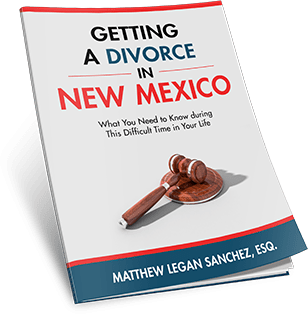“I’ll take a Pop.”
“Pop? You mean you want a Soda?”
“No, I want a Coke.”
“Coca-Cola?”
“No, like I said, I’ll take a Dr. Pepper.”
Soda – Pop – Coke – three distinct terms that people often use interchangeably to name an entire group of carbonated beverages. Like most people from Albuquerque I use the term Coke. It really doesn’t matter what I’m ordering, to me it’s a Coke – it just happens to be a different brand and flavor of Coke. For instance, Sunkist is an orange Coke. Grape Crush is a purple Coke, and Sprite is a clear Coke. But when it comes down to it, they’re basically all Cokes.
The reason that I bring up Soda – Pop – and Coke is that we all tend to use distinct terms interchangeably from time to time. As a lawyer, there are three legal terms that are constantly pulled from a grab-bag of words without care or concern for their actual meaning: Reasonable Suspicion, Probable Cause, and Proof Beyond a Reasonable Doubt. Just like a Coke is different from a Sunkist, which is different than a Grape Crush – likewise – reasonable suspicion is different from probable cause, which is different than proof beyond a reasonable doubt.
THE DIFFERENCES BETWEEN REASONABLE SUSPICION, PROBABLE CAUSE AND PROOF BEYOND A REASONABLE DOUBT
Reasonable Suspicion
Our first buzz word for the day is Reasonable Suspicion. Whether you are walking down the duck pond at UNM or driving up Montgomery Blvd., a police officer always needs reasonable suspicion to stop and detain you for the purpose of conducting an investigation. The standard of reasonable suspicion is met if the officer can persuasively explain to the Court what was seen and why that information led the Officer to reasonably believe that a law was violated. Regarding traffic stops – if the officer can explain why the officer felt a violation of the law occurred, or was occurring, then the requisite reasonable suspicion for the stop will be met.
Probable Cause
The next legal standard on our stop is Probable Cause. As we’ve seen, an officer needs reasonable suspicion to stop an individual, which is a subjective standard based on what the officer reasonably believes. In order to place the same person under arrest an Officer needs to uncover enough evidence to meet the higher standard of probable cause. Probable cause is established when a reasonable person – lacking the specialized knowledge and training of an officer – believes that a crime was committed based on all of the evidence that the officer uncovered during the investigation. In other words, after the initial stop, the ensuing investigation must uncover enough evidence that leads an objective and reasonable person to believe that a crime has occurred.
Proof Beyond a Reasonable Doubt
Reasonable suspicion and probable cause deal with the amount of evidence that an officer needs to first stop and then to arrest an individual. Assuming that the individual is ultimately arrested, in order for the person to be found guilty of the charged crime the State must prove beyond a reasonable doubt that a crime was actually committed. Essentially this means that the State must present enough evidence to utterly convince the average person that a crime was committed. If there is any doubt – with any reason behind it – then the person charged with the crime must be found not guilty. Proof beyond a reasonable doubt is higher than the subjective standard of reasonable suspicion, which is necessary to stop and detain, and it is higher than the objective standard of probable cause, necessary to arrest. It is also higher than the civil standard of “Preponderance of the Evidence,” which means more likely than not and is used in disputes over property and personal injury cases. It is even higher than the legal standard of “Clear and Convincing Evidence” which is used in some civil cases such as fraud.
As we have seen, simply because an officer is permitted to stop and question a person does not give the officer the authority to place the person under arrest. Additionally, the level of evidence necessary to place an individual under arrest does not provide enough evidence for one to be found guilty of the alleged crime.








